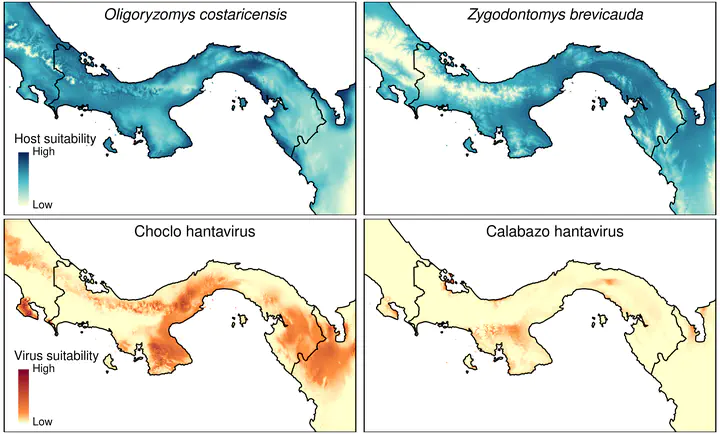Communicating our results at ASM 2024
Suitability dynamics for Hantaviruses and their hosts in Panama
 Long-term consensus suitability
Long-term consensus suitabilityHantaviruses are RNA viruses associated with rodents and other mammals that cause human disease, with mortality rates of 12-60%. In the early 2000s, an outbreak of Choclo hantavirus in humans occurred on the Azuero Peninsula of Panama. Long-term surveys identified Oligoryzomys coastaricensis, the Costa Rican pygmy rice rat, and Zygodontomys brevicauda, the short-tailed cane mouse, as the primary reservoir hosts of hantaviruses in Panama (Choclo and Calabazo hantavirus strains, respectively). At ASM 2024, we are presenting the results of a project that used specimen and pathogen test-result data to model the ecological niches of these hantaviruses and their hosts, and explore suitability for these taxa at monthly bases (2000-2018).
Suitability dynamics
Below you can find a GIF animation that shows dynamic suitability landscapes for Oligoryzomys coastaricensis. This animation shows monthly predictions of suitability 2000-2018.

If you are at ASM on June 10th, come and check the presentations of Danny (11:15 AM) and Alex (11:30 AM), and Jocelyn poster on June 10th at 2:30-5:30 PM.
GIF animations for the other species are available at our project GH repository.